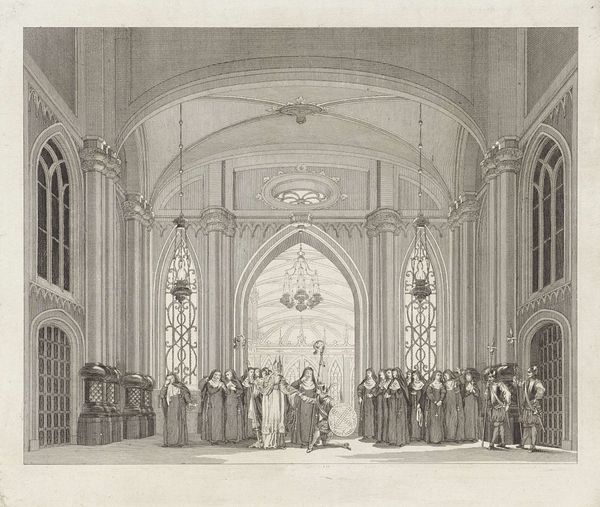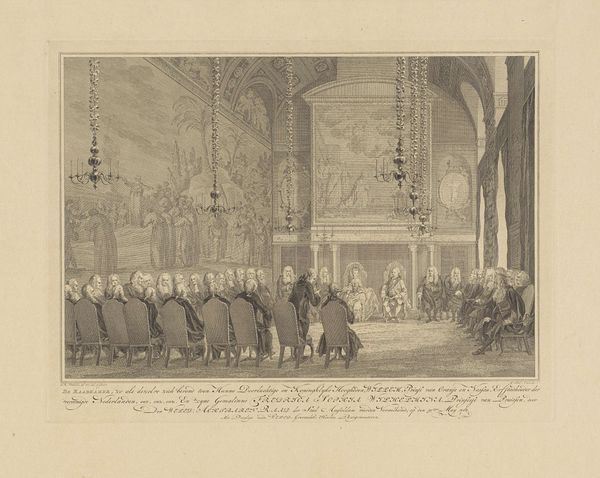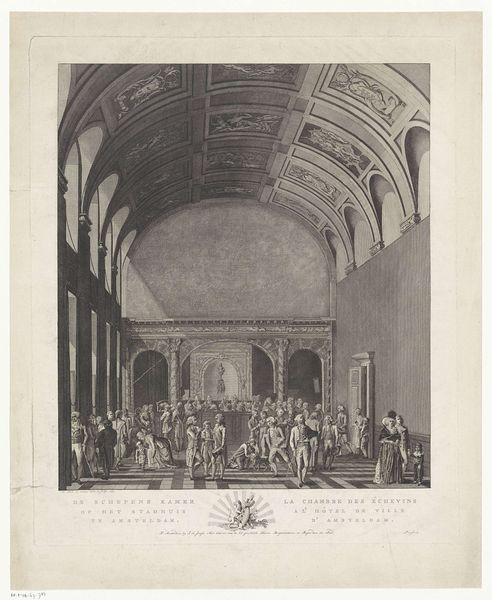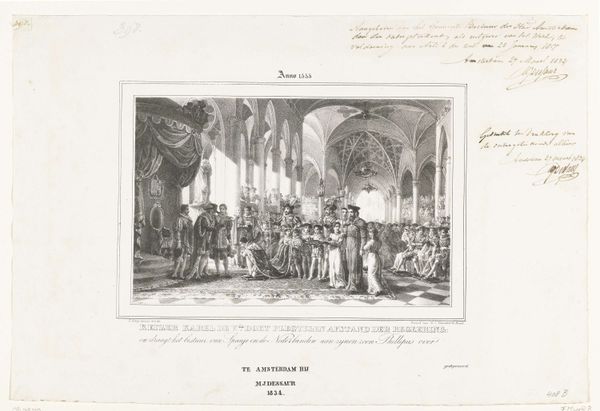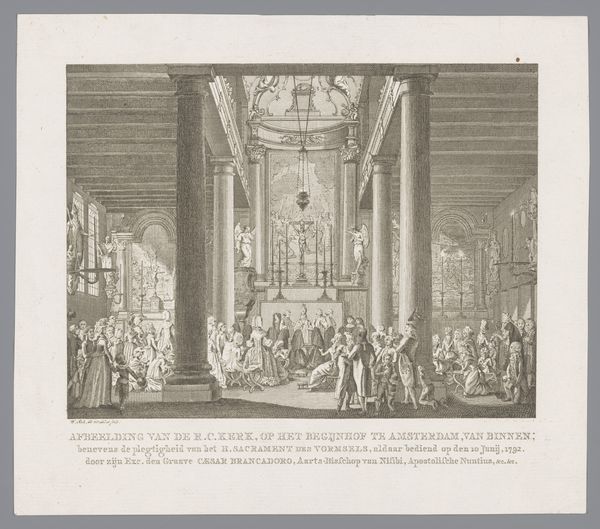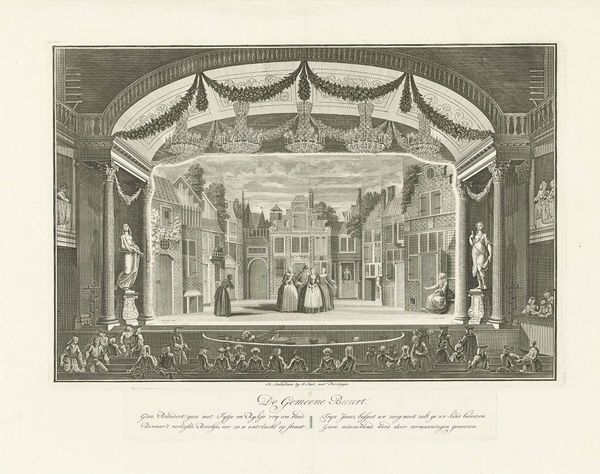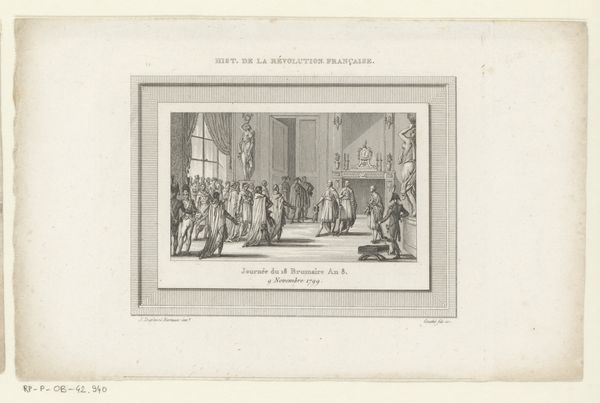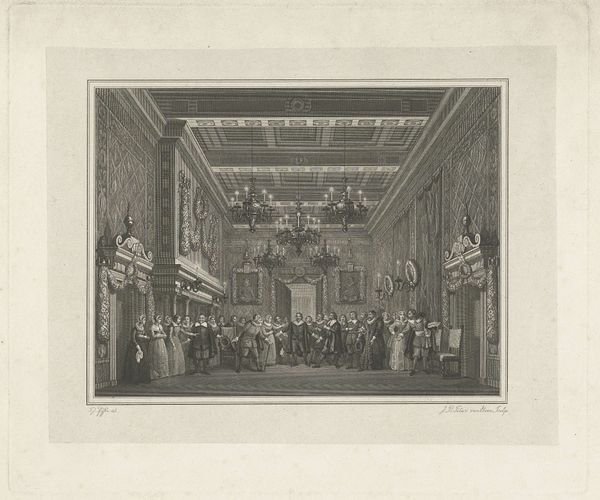
Dimensions: height 360 mm, width 425 mm
Copyright: Rijks Museum: Open Domain
Curator: The piece before us, "Toneeldecor: De Klooster-Kapel," dating from 1776, is attributed to Reinier Vinkeles. It is a meticulously crafted engraving, currently held at the Rijksmuseum. Editor: My initial impression is one of solemn grandeur. The tall, pointed arches and symmetrical layout convey a powerful sense of order and the somber scene with the procession is appropriately staged. Curator: Indeed. Vinkeles has used linear precision to depict the architectural details, carefully modulated to give the illusion of depth. The consistent light source enhances the clarity of the space. Editor: Let’s consider the context. During this period, printmaking was central to disseminating ideas, often functioning as a form of social and political commentary. Theater was particularly impactful because it touched such a vast audience. What might the depiction of this chapel represent in the public sphere? Curator: We might observe the contrast in textures. The smooth, massive columns set against the complex, decorative elements higher up guide our vision. There’s a distinct sense of the horizontal plane balanced by the dramatic vertical reach of the windows and vaulting. Editor: But who was this designed to influence? We see the details, but what meaning might a late 18th-century audience attach to this carefully structured chapel? Does this evoke certain religious connotations or, perhaps, suggest particular political ideals given the era's upheavals? Curator: The clarity and balance reinforce a very stable structural relationship among the elements, emphasizing perhaps the timelessness of these religious foundations. Editor: And the gathering of individuals at center is interesting, highlighting the role of theater in bringing such institutions into public discourse, thereby influencing opinions. What narratives might this stage inspire audiences to believe? Curator: Thinking purely in compositional terms, the light reflecting from the walls acts to diffuse and soften any harsh lines, making the engraving more accessible and pleasant. Editor: A clever printmaker uses his art to invite viewers to participate in wider debates, beyond aesthetic admiration. These details provide hints toward social and political dimensions worthy of exploration. Curator: I concede it opens many channels to broader meanings beyond the technical proficiency demonstrated here. Editor: Yes, this close-form print allows us an opening to look further at Dutch identity and thought. Thank you for calling out the composition, which adds nuance.
Comments
No comments
Be the first to comment and join the conversation on the ultimate creative platform.
